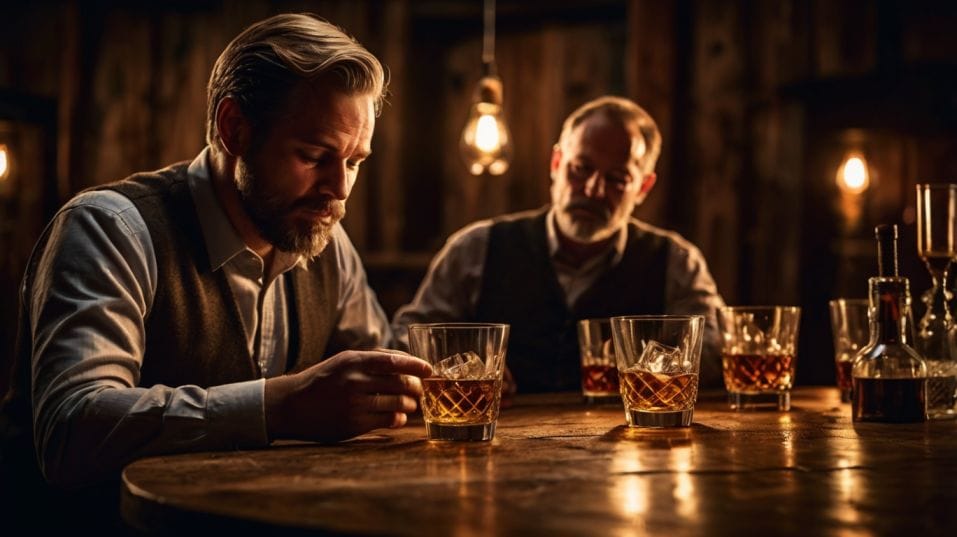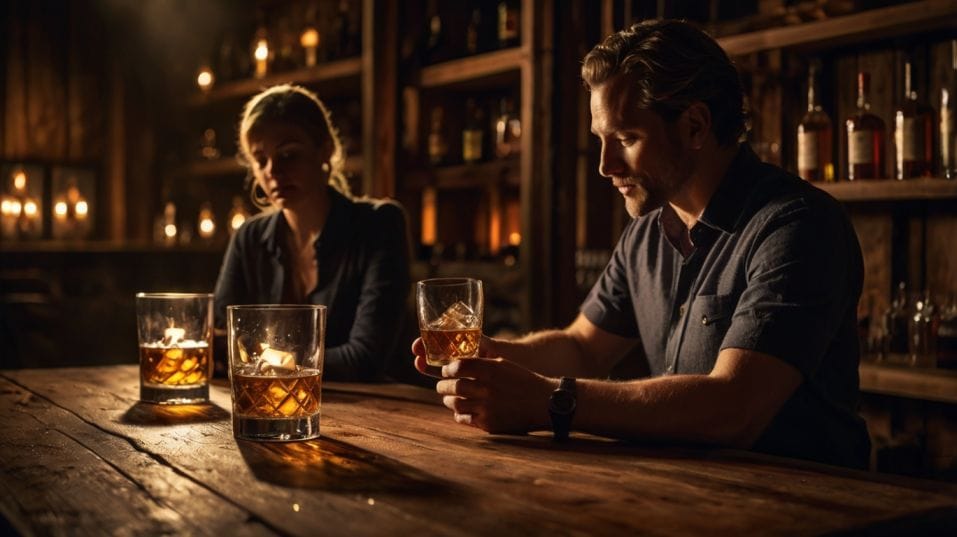Top Mistakes Beginners Make (And How to Avoid Them)
New to whiskey? Learn the biggest beginner mistakes to avoid so you can taste smarter, buy better, and build confidence—one sip at a time.

Ever wonder why your whiskey journey feels more confusing than rewarding? You're not alone. Most beginners miss the mark—not from lack of effort, but from trusting hype, habits, or half-truths.
This guide breaks down the biggest missteps new whiskey drinkers make and shows you how to sidestep them. No fluff. No ego. Just smarter ways to taste, learn, and enjoy. If you're ready to get more out of every pour, start here.
Treating Whiskey Like Wine (Or Worse, Vodka)
Here’s what whiskey isn’t: it’s not a wine you swirl for effect, and it’s not a neutral spirit you shoot and forget. Whiskey is volatile.
It hits hard, evolves fast, and tells you more through aroma than taste—if you let it. But if you're slamming it back or flooding it with ice, you're shutting down the very thing you're here to explore.
Don’t confuse “respecting the whiskey” with being pretentious. Pour a small amount. Let it sit for a minute or two. Warm it slightly with your hand.
Then breathe it in—just enough to catch what’s going on. Sip slowly, with space between tastes. That gap lets your brain catch up with your palate. It’s not ceremony—it’s calibration.

Ignoring the Glass (Yes, It Really Matters)
Drinking whiskey out of the wrong glass is like watching a film through a fogged-up lens. You’ll catch some of it, but you’ll miss the details—the layers, the shifts, the nuance.
Rocks glasses? Fine for cocktails. Bad for learning. The wide opening throws off aroma concentration and buries subtleties before they reach your nose.
Use a proper nosing glass—Glencairn, Copita, even a small tulip-shaped wine glass in a pinch. These focus the aromatics upward, giving you a clearer read before you ever taste.
And when you do sip, keep your mouth slightly open. Let the vapor pass. You’ll notice more, faster. This isn’t a hack. It’s just how your senses actually work when you stop dulling them.
Chasing Age Like It’s a Trophy
If age equaled quality, every dusty bottle would be a masterpiece. It’s not. Maturation is about balance, not time served.
Over-oaked whiskey—especially from smaller barrels—can taste flat, bitter, or overly tannic. Some older bottles lose vibrancy, smothered by years in the wood.
Good whiskey has structure. It balances sweetness, spice, grain character, oak, and finish. You can find that at 4 years or 14. Don’t get locked into numbers.
Instead, learn what a certain age means for that style. A 6-year-old rye may explode with life. A 10-year-old Scotch may still be finding its voice. Know the type. Know the context.
Believing the Label Like It’s Gospel
Marketing is designed to manipulate your judgment. “Small batch.” “Handcrafted.” “Single barrel.” These phrases may sound artisanal, but most are unregulated.
Some are total fiction. Even age statements can be misleading. That "12-year" whiskey? It means the youngest barrel in the blend is 12—not the average, and definitely not all of them.
What matters more: who made it, how it was distilled, what barrels were used, and how it was blended. Learn the distillery’s style. Research the mash bill.
Find out if it’s sourced or in-house. When you start asking smarter questions, you stop falling for the label, and you start seeing through the hype.
Tasting Without Tracking
You can’t build taste memory by accident. If you’re not writing it down, you’re not really learning.
Your brain isn’t built to remember 50 subtle differences in finish or aroma. But a few quick notes? That’s how patterns form. That’s how preferences get clearer.
Skip the rigid scoring sheets. Just log what stands out: Sweet? Sharp? Oily? Dry? Does it remind you of cinnamon toast, wet leaves, leather, or burnt sugar?
Be specific. Be weird. The more personal your notes, the faster your palate sharpens. Months later, you’ll start connecting dots—and that’s when whiskey starts clicking in a deeper way.
Obsessing Over Rare Bottles Too Soon
Everyone gets caught in the hunt at some point. The unicorn bottles, the secret allocations, the overpriced hype pours. The flex.
But collecting before you understand flavor is like building a library you’ll never read. What are you even chasing?
Start with accessible bottles that explore different styles:
– High-rye bourbon
– Wheated bourbon
– Peated Scotch
– Unpeated malt
– Single pot still
– Sherry cask
– Cask strength
Each one shows you something new. You’ll develop preferences, and when you finally land that rare bottle, you’ll know whether it’s your kind of special, not just expensive shelf candy.
Drinking Alone in an Echo Chamber
Solo tasting is useful, but isolated drinking limits your growth. You need contrast. You need argument. You need a friend to say, “You don’t taste the clove in that?” and make you go back and try again.
Taste blind when possible. Pour two or three bottles with friends and compare them side by side. Don’t name them until the end.
This strips away brand loyalty and lets flavor take the lead. That’s where real confidence comes from—not memorizing reviews, but trusting your own judgment when the label is hidden.
Overcomplicating, Under-Tasting
Beginner mistake: thinking you need to know everything to enjoy whiskey. You don’t. You just need to pay attention.
You don’t have to memorize every distillery history or chemical compound to taste better. You just need to slow down and engage your senses.
Taste often. Taste intentionally. Pour a half ounce. Revisit something you didn’t love the first time. See how it shifts after a month open. Compare two versions of the same distillery. Play. Don’t just study whiskey—experience it.
Final Thoughts
The biggest mistake? Thinking whiskey appreciation is something you master in a few pours. It isn’t. It’s a practice. A conversation. A slow burn. So skip the ego, ignore the noise, and build your own taste language—one glass at a time.
Tonight, pick one bottle you haven’t paid enough attention to. Pour it right. Sit with it. Let it tell you something you missed last time.
That’s how it starts. Not with the rarest bottle or the loudest opinion—but with the person who shows up, listens, and learns. Be that person. Start today.




